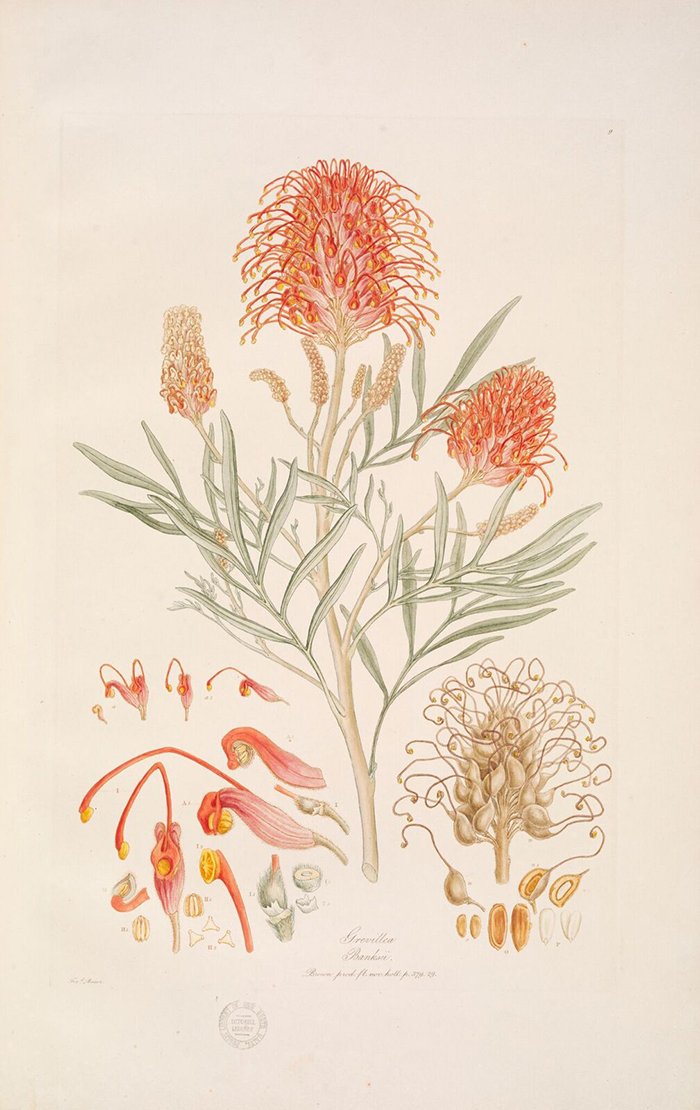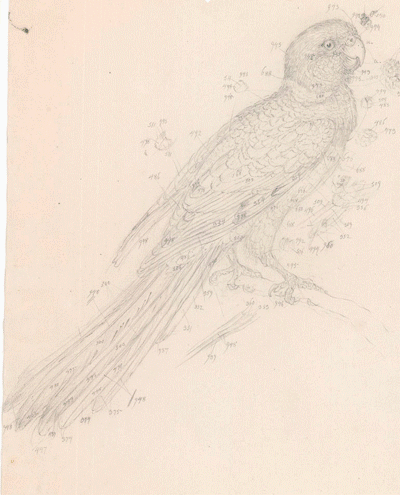The artworks of Ferdinand Bauer given digital resurrection

THIS QUANTITY OF Ferdinand Bauer’s works have never been in the same place at the same time. Rather, they’ve been scattered across different parts of the world, from Bauer’s home in Vienna to the jumbled botanical collections of various British museums.
“Putting this book together was not a simple matter…it’s not like pulling one thing from one drawing and then one thing from another,” David Mabberley tells Australian Geographic, on piecing together the life and artworks of Bauer, who he refers to as the “bachelor painter” for his seemingly reclusive nature, making it difficult for even a decorated botanical scholar to fully understand his character.
David’s new book, Painting by Numbers: the life and art of Ferdinand Bauer is the first of its kind and not just because it features never-before-published works. Painting by Numbers is enriched by the State Library of New South Wales’ DX Lab, a data visualisation project that began two years ago, and has since revolutionised the way the library is able to bring information to life.
But they’ve never attempted anything on this scale before. For DX Lab’s leader Paula Bray the challenge presented by Bauer — his scattered works and complex colour coding techniques —was a chance to demonstrate to audiences the critical role digital innovation will play in their understanding of histories that once seemed too large to ever fully comprehend.

Numbered fish sketched by Bauer. (Image Credit: Naturhistorisches Museum, Wien)
Painting by numbers
In 1801 Matthew Flinders and his crew aboard the HMS Investigator anchored near the tip of Fraser Island, off Australia’s eastern Queensland coast, determined to circumnavigate the coastline of Australia— then called New Holland.
To record the plants and animals of this new British colony, Flinders employed renowned naturalist Robert Brown and natural history artist Ferdinand Bauer.
In just a week, Bauer could produce up to 61 illustrations, all the while maintaining what David describes as “supreme colour fidelity” by numbering his sketches according to colour and using alchemical symbols to indicate levels of sheen.
“Although he may have had charts of some kind it seems most likely, because he worked at such speed, that he had these numbers in his head. He was associating numbers with shades, about up to a thousand,” David says. “When you look at the speed, how many he did in a day and how many numbers are all over these sketches, it’s rather like a musician who can read notation.”

Gymea Lily by Bauer. (Image Credit: State Library of NSW)
Visualising data
It was originally agreed that David would write Painting by Numbers and it would be accompanied by a large exhibition of all the works he’d spent much of his time collating.
However, the sheer size of the collection, and the time it would it take to explain Bauer’s complex colour codes, would have resulted in a failure to communicate Bauer as the genius he clearly was.
“It’s only because of digital innovation that we’ve been able to bring this together on a substantial scale. If we just had the physical exhibition we’d only be able to ring a few of them together. Having the digital show allows us to have 300 of these things,” David says.
The site is a careful concoction of numbers, colours and sketches.
“Because of the way the site is constructed it’s much more exciting than just going to the website of the Natural History Museum in London and seeing a few drawings.”
Each artwork is accompanied by the specimen’s scientific name, common name, the location the specimen drawn was found, Curator’s notes and the colour palette used. And, according to Paula, practically every proponent of the site is linked, so it’s easy to wind up lost down the digital rabbit hole.

Red silky oak (Grevillia banksia) by Bauer. (Image Credit: State Library of NSW)
Interactive and playful
Rather than being an issue of accessibility, Paula explains that when it comes to exhibiting the works of Bauer, aggregation was a major setback.
The 3-D homepage for the Painting by Numbers digital exhibition is an entrancing palette of over 9000 colours, loosely based off the hues used by Bauer.
When you click on one of the tiny, coloured squares, it expands and pixelates into a mock-up of a particular specimen painted with that exact colour, which Paula says is to “play on mind and memory.”
To fully illustrate the precision of Bauer’s colour codes, the site allows you to see the sketches created in the field alongside the finished watercolour.

Port Lincoln ringneck (Barnardius zonarious) by Ferdinand Bauer. (Image credit: Naturhistorisches Museum, Wien)
“It’s accessible, it’s playful. I think they’ve done a nice job of letting people into the material. You can move on, deeper and deeper, however far you want to go because of the things they’ve put in place,” says David.
Mostly, David hopes that the digital aggregation of Bauer’s work into one spot, made interactive and easy to understand, will give Bauer the recognition he deserves.
“What’s important is that his finest work was done here. And I think that people in Australia should be very grateful for that documentation was undertaken by such a talented person.”
To see the new digital exhibition Painting by Numbers click HERE.
READ MORE:




